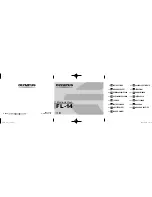
21
Also there are some other buttons below the grid:
1.
‘Delete Sel’ - Deletes the highlighted camera or video in the grid list.
2.
‘Edit’ – Brings up the Edit box as before in the camera inventory window. It
allows the camera’s mode, colour and name to be changed.
3.
‘Information’ – Opens another window displaying the camera’s information.
4.
‘Snap’ – Takes an image from the highlighted camera and displays them to the
screen.
5.
‘Copy Frame’ – Copies the frame showing in the image window and places on
the Windows™ clipboard.
6.
‘About’ – Displays information relating to the HotShot Link software.
Recovering Data from the Buffer
To recover data from the buffer perform the following:
1.
Open up the ‘Camera Inventory’ window as above.
2.
Tick the camera whose data needs to be recovered.
3.
Click the ‘Recover data from Buffer’ button this will connect the camera and
attempt to recover any data on the board and load up the trigger frame as it
would after making a recording. Then the camera is ready for normal use.
Data can only be recovered from a full restart if the computer has not lost power. If it
has lost power the RAM on the PCI board will be wiped clean.
Making a Recording
To make a recording do the following, after connecting to a camera:
1)
Select the Memory Segment
: This box will be filled up with the number of
memory segments the board has been made into. To change this see below.
2)
Select recording parameters
: Use the Record Info to set the Frames per
second, shutter speed and trigger mode.
3)
Push the View/Arm Button
: You are in view mode. You can set up the shot
and focus either using the on screen display (slow update) or via the VGA
output from the camera head.
4)
Push the View/Arm button again
: you are in ARM Mode. The system is
waiting for a trigger.
5)
Trigger
: Either from the software or the external hardware trigger.
6)
Review the recording
: When the system has finished the recording you will
be back in ready mode. You can review the recording using the VCR controls.
7)
Set the save range:
use the scroll bar to set the range of interest.
8)
Save the images:
push Save as, you can save as a series of images or as an
AVI or save out the entire board’s buffer data which is an efficient means of
downloading all of the recording quickly which then can be loaded back into
the board for post-record operations. Depending on the Image size will depend
on what AVI Codec’s are allowed. You can ALWAYS use uncompressed and
NAC MJPEG or Pixoft’s Squeeze codec as available.
















































